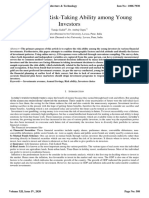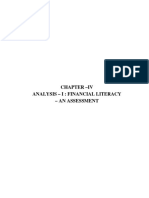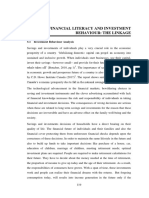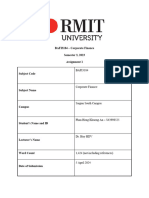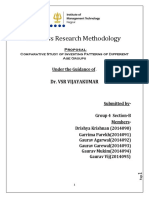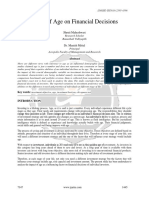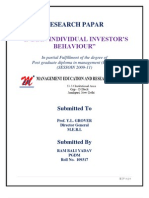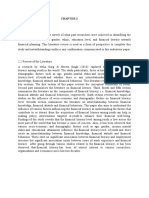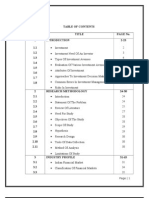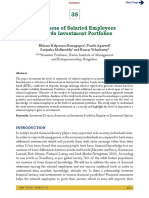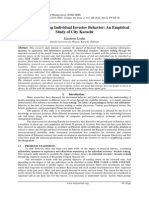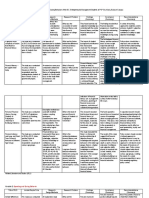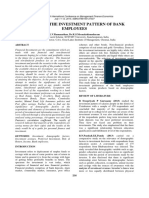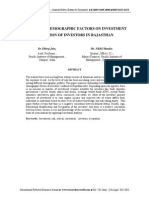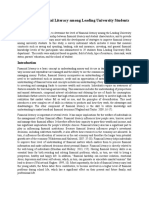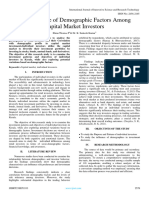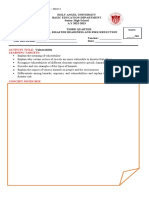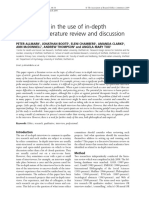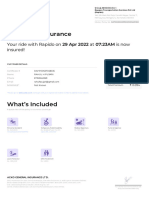0% found this document useful (0 votes)
12 views10 pagesFinal Data Analysis
The document analyzes individual investors' attitudes towards various investment avenues, revealing that Fixed Deposits are the most preferred option, followed by Mutual Funds and Equity investments. It also explores the relationships between age, risk appetite, financial literacy, and investment behavior, indicating that older individuals tend to have lower risk appetites but higher financial literacy. Additionally, the findings suggest that while financial literacy positively influences investment levels, its impact on satisfaction from investments is minimal.
Uploaded by
vinaymeenaCopyright
© © All Rights Reserved
We take content rights seriously. If you suspect this is your content, claim it here.
Available Formats
Download as DOCX, PDF, TXT or read online on Scribd
0% found this document useful (0 votes)
12 views10 pagesFinal Data Analysis
The document analyzes individual investors' attitudes towards various investment avenues, revealing that Fixed Deposits are the most preferred option, followed by Mutual Funds and Equity investments. It also explores the relationships between age, risk appetite, financial literacy, and investment behavior, indicating that older individuals tend to have lower risk appetites but higher financial literacy. Additionally, the findings suggest that while financial literacy positively influences investment levels, its impact on satisfaction from investments is minimal.
Uploaded by
vinaymeenaCopyright
© © All Rights Reserved
We take content rights seriously. If you suspect this is your content, claim it here.
Available Formats
Download as DOCX, PDF, TXT or read online on Scribd
/ 10
